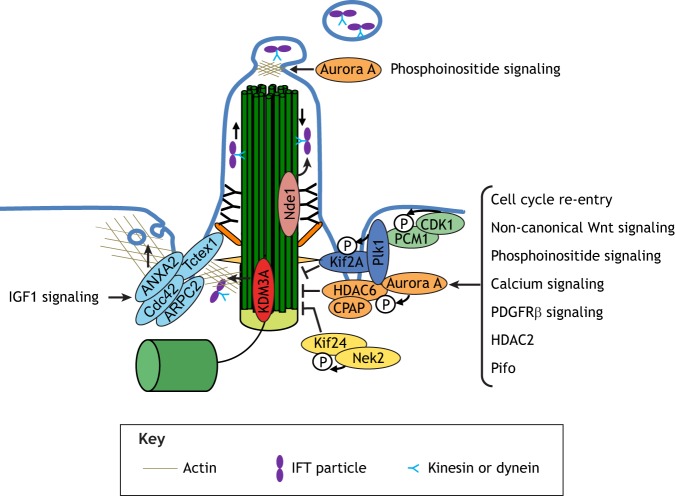Fig. 4.
The regulation of cilium disassembly. Cell cycle re-entry, accompanied by several signaling pathways and regulatory proteins (including non-canonical Wnt signaling, phosphoinositide signaling, calcium signaling, PDGFRβ signaling, HDAC2 and Pifo), can trigger cilium disassembly via the activation of Aurora A. Aurora A then phosphorylates and stimulates the histone deacetylase HDAC6, which de-acetylates and destabilizes microtubules within the axoneme. During cilium disassembly, Plk1 and Nek2 activate the kinesins Kif2a and Kif24, respectively, which are required for the depolymerization of microtubules. Plk1 is recruited by PCM1 with the help of CDK1. Cilium disassembly also requires the modulation of IFT transport: KDM3A, for example, inhibits entry of the IFT complex into the cilium, whereas Nde1 regulates retrograde IFT transport. Growth signaling also triggers the removal of IFT-B particles through ciliary ectosomes released from the ciliary tip, which is also under the control of Aurora A. Cilium disassembly also requires remodeling of the ciliary pocket, accompanied by the enhancement of clathrin-mediated endocytosis. This process is controlled by Tctex1 and associated proteins (such as ANXA2, Cdc42 and ARPC2) and can be induced by IGF1 signaling. PDGFRβ, platelet-derived growth factor receptor β.

